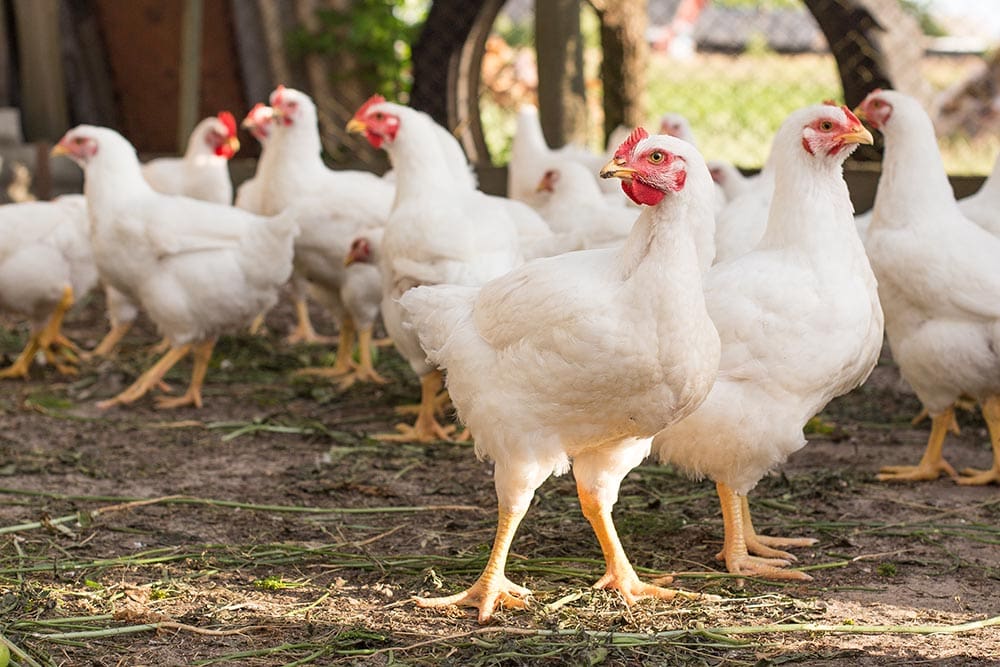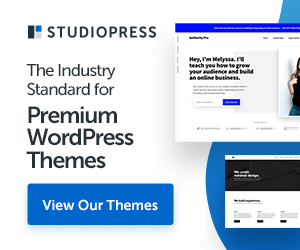9 Recommendations For Growing Broilers During The Summer

Table of Contents
There is never a time in broiler production where there aren’t challenges facing producers in some form or fashion. Many challenges – whether they are nutritional, health, or management related – tend to be seasonal. Fall is typically a favorite season for many producers, lending optimized weather conditions for broiler growth. But hot summer temperatures bring on a new set of obstacles.
Heat stress, for example, is a concern in the summer – especially when hot temperatures are combined with high humidity. The optimal temperature for raising broilers is between 65°F and 75°F. In this temperature range, birds remain in their thermoneutral zone. In the thermoneutral zone, broilers can maintain their core body temperature without altering feed intake, behavior or metabolism. Body heat production is also at its lowest in this zone. When the temperature reaches beyond the upper range of the thermoneutral zone, birds are unable to dissipate heat without expending extra energy. Instead, heat loss occurs through panting or evaporative cooling. Additionally, birds may exhibit signs of heat stress such as lifting wings away from the body to reduce insulation, increasing water intake and reducing activity – including eating. There are also other physiological changes such as increased blood corticosterone, reduction in thyroid hormones, increased oxidative stress, increased inflammatory cytokines, increased blood pH (respiratory alkalosis), alterations in intestinal microflora, reduction in blood flow to the intestines and other internal organs and loss of intestinal integrity. Ultimately, in addition to being a welfare issue, heat stress leads to economic loss from decreased performance, reduction in meat quality and increased mortality.
In addition to heat stress, there are also health management considerations in the summer. Producers usually switch to a different coccidiosis control program, for example. It is important to know which coccidiostats are best for summer. Coccidiosis vaccines are also quite common, but require attention to management and can be associated with secondary disease conditions.
As with health, there are also nutritional considerations. Summer weather presents optimal conditions for mold growth providing exposure to adequate moisture and heat. If not controlled, mold growth can lead to a decline in feed quality through loss of nutrients and vitamins. Additionally, molds can produce mycotoxins which lend their own detrimental effects, including loss of intestinal integrity and impaired immunity. There is also the risk of feed rancidity which can reduce the fat energy levels in the feed, as well as the availability of fat-soluble vitamins.
Although we face many of the same issues year to year and summer to summer, here are a few reminders on how to combat summertime challenges through management, nutritional and health interventions.
NUTRITIONAL
1. Adapt Your Formula for the Season
Many times, negative performance during the summer is due to reduced feed intake. To counteract birds backing off feed due to heat stress, there are several adjustments that can be made to dietary formulas. Formulation of nutrient dense diets can help birds maintain nutrient intake while eating less feed. Increasing energy levels in diets may also compensate for reduced feed intake. Because protein digestion produces higher levels of heat, this is often accomplished by increasing fat levels and lowering protein. If protein levels are reduced, however, amino acid levels must be carefully balanced to compensate for example through synthetic amino acid and/or enzyme supplementation.
2. Maximize Feed Quality
While birds can lose nutrients through reduced feed intake, they can also lose nutrients by having poor feed quality. Warm temperatures and high humidity lend opportunistic growing conditions to molds especially. Molds can reduce feed quality by utilizing the nutrients in the feed before it gets to the birds. In addition, the mycotoxins produced by molds negatively affect birds in various organ systems along with reducing performance and feed efficiency. Performance loss from molds and mycotoxins can be combatted, however, by adding mold inhibitors and mycotoxin binders to feeds. Similarly, antioxidants can protect fats and oils in feed from becoming rancid through oxidation.
3. Supplement with Vitamins and Minerals
Supplementation with vitamins and other additives can be useful in mitigating the effects of heat stress. Vitamin C supplementation, for example, can reduce corticosterone levels in birds and prevent reduction of feed intake. Vitamins A, E and C supplementation may be beneficial not only because they are antioxidants and heat stress causes oxidative stress in birds, but also because they are not synthesized as readily in heat-stressed birds. Mineral supplementation is also helpful. Selenium, also an antioxidant, can be added to ameliorate the effects of oxidative stress. Minerals such as calcium, zinc, phosphorus and magnesium that are critical to growth and development are loss either through reduced appetites or from lowered metabolism during heat stress. These minerals should also be supplemented to counteract this loss. Other minerals, such as chromium, directly ameliorate heat stress by reducing corticosterone levels. Supplementation with chromium can therefore improve growth rate and yield during heat stress. Additionally, it is critical to address electrolyte loss and acid-base imbalance due to respiratory alkalosis from panting. Salts such as sodium bicarbonate and potassium chloride can be added to the feed to maintain acid-base balance. Electrolytes may also be supplemented in the water.
HEALTH
4. Address the Immune System
One of the many detrimental effects of heat stress is an impaired immune system. Excessive heat tends to impair the ability of broilers to emit immune responses to vaccine and to fight off disease pathogens. While many producers associate the summer with less risk of disease and may use a less aggressive immune vaccination program during the summer months, it is critical that focus must be given to these programs. One way to help is to perform diagnostic surveys for Infectious Bursal Disease and reovirus to ensure the vaccination program being used matches the challenges in the birds. In addition, it is important to evaluate efficiency of programs by looking at titers, as well as vaccine application in breeders.
5. Choose the Right Coccidiosis Control Program
Special attention should be paid when planning summer rotation programs. While challenge tends to be lower in the summer months due to drier litter, coccidiosis is still a major contributing factor to performance loss. Choosing the right anticoccidial is important for the summer as some anticoccidials are not ideal. For example, nicarbazin reduces heat tolerance in broilers and monensin reduces water and feed intake. Therefore, these anticoccidials are often not used in summer months. Lasalocid, a salt, on the other hand tends to increase water consumption and may be ideal for the summer. Salt levels in the diet, however, should be carefully balanced in a lasalocid diet to prevent wet litter. Coccidiosis vaccination programs are also popular in the summer and can be useful in restoring sensitivity to anticoccidials for use in cooler months. Special attention to management, especially in the brooding period, must occur so that these programs are successful. It is best to follow the recommendations of the manufacturer when related to management practices during vaccination programs.
6. Fight off Intestinal Disease
A good intestinal health program starts with a strategic coccidiosis prevention program, however, there are other intestinal challenges that can reduce performance in birds. While coccidiosis vaccination is a good option for summer rotations, secondary conditions such as necrotic enteritis and dysbacteriosis can increase in incidence during vaccine programs. Consider using a bioshuttle program where an ionophore or chemical anticoccidial is added during the grower and/or finisher feeds. Another option would be to use a phytogenic feed additive to lower peak cycling of the vaccine, reduce gut irritation and optimize performance. Careful attention to timing of bioshuttle programs and addition of phytogenics is critical, however, as you don’t want to inhibit or delay development of coccidiosis immunity. Probi*tics with specific activity against Clostridium perfringens are also helpful when necrotic enteritis challenges arise.
MANAGEMENT
7. Provide Adequate Ventilation
During the summer, it is critical to remove heat from the broiler house. Be sure to provide proper air speed uniformly throughout the house for tunnel ventilation. This can be accomplished by making sure houses are tightly sealed and there are no holes in the walls or ceilings. It is also critical to have the correct number of fans and check that they are in good condition. This means ensuring fan belts are not loose, as well as making sure fan blades and shutters are clean as dust and loose belts can reduce airflow. Bearings should also be lubricated if needed.
8. Maintain the Evaporative Cooling Systems
Evaporative cooling systems need to be maintained to optimize cooling. Cool pads can lower the temperature in the house significantly and combat heat stress, but there are factors that can lower the efficiency of systems. It is most important that pads and pipes don’t become clogged. Dirt and debris should be removed mechanically from pads and mineral deposits and scale should be removed with a cleaner. Filters should also be flushed prior to use. Algae can clog pads and should be avoided by cleaning, limiting exposure to sunlight and allowing pads to dry out once a day.
9. Ensure Water Availability
Birds consume more water as the temperature rises. It is important to have cool water available to dissipate heat. Birds should have sufficient drinker space and water pressure, and nipple drinkers should be properly maintained. Flushing lines regularly can help cool water and cooler water encourages birds to drink more. As birds drink more water, feed intake tends to follow.







